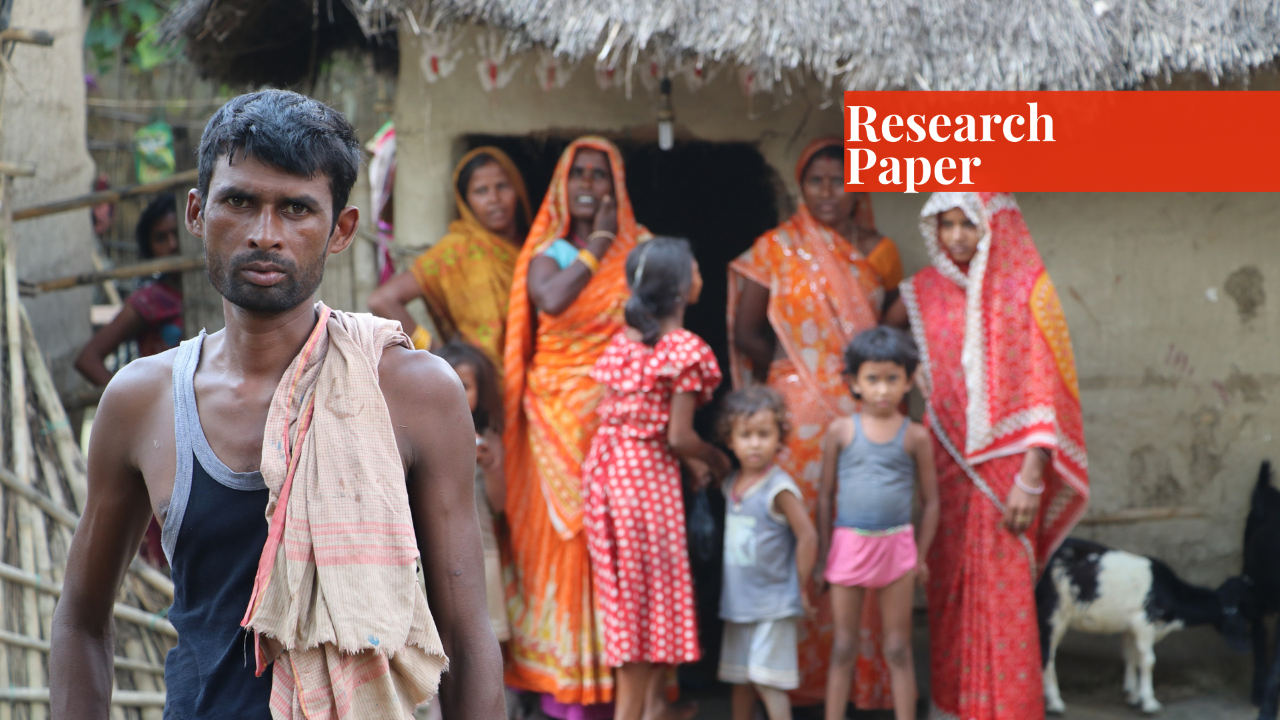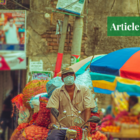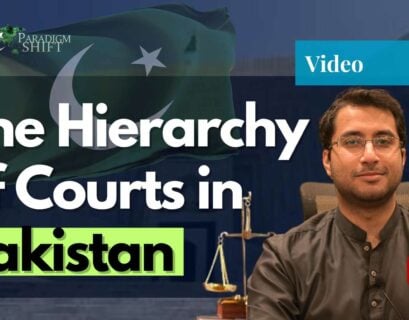Ms. Zaryab Fatima completed her Bachelor's in Sociology from the University of Sargodha.
Introduction
Clearly, poverty is an unending strategy-focused issue, which has reliably been critical in cordial policy making and in worldwide improvement conversations. One could even say that the issue is unavoidable and without a doubt ontological in a liberal political solicitation since it centers around the difficulty of understanding ideal citizenship in communities that remain essentially conflicting (Procacci, 1996: 409; Stedman Jones, 2004).
James D. Wolfensohn, the former World Bank President, communicated that poverty amidst abundance is still the world’s most conspicuous issue. In 1996, the United Nations General Assembly settled that obliterating poverty was a good, political, social, and monetary premise of mankind. Worldwide new development, trade affiliations, and monetary organizations, along with specialists and scholars in this field confirmed this statement (World Bank, 2001).
For the last 30 years, the common talk in international development has been the worldwide authoritative issue of poverty alleviation, which revolves around needy individuals and policies that move towards lifting people out of poverty or safeguarding others from falling into it. Poverty reduction strategy took different structures and evoked changing pictures throughout the long term, however “poverty” itself disappeared from public talk after the 1950s, to turn out to be “practically untouchable”.
Before the end of a similar period, even global monetary organizations considered poverty alleviation as the second most important issue, which demands possible practical efforts in structures of policymaking and financial turn of events (De Bernard, 2002: 17-21; Stiglitz, 2002: 53-88).
Poverty
“Poverty is generally explained as the deficiency or the condition where an individual doesn’t have a particular proportion of material assets or money. It is a condition wherein a neighborhood an individual misses the mark on the key prerequisites to see the value in a basic lifestyle in the public eye” (Lister, 2004).
The United Nations portrays poverty as “the disappointment of getting choices and openings. This is explained in different circumstances as not having enough to deal with and dress a family, not moving toward guidance and a school to go to, not moving toward clinical workplaces or a middle to go to, not having the land to create sustenance for singular use or conceivably not getting the opportunity to hold something essential to bring in cash”.
The United Nations considers this to be an encroachment of basic freedoms as the shortfall of crucial capacity to share sufficiently in the public eye achieves fragility, shortcoming, and preclusion of individuals, families, and organizations into the social orders’ norm. The World Bank defined poverty as “difficulty in the success of which various estimations are considered”.
These join low jobs and the inability to acquire central work and items considered critical for perseverance with satisfaction. Various estimations included are shortage of clean water and sterilization, low levels of prosperity and guidance, inadequate genuine security, nonappearance of voice, and insufficient breaking point and opportunity to better one’s life.
Poverty is by and large assessed as either absolute or relative. In relative construction, the equilibrium shows up as a record of pay awkwardness. The examination of poverty is regularly associated with globalization as the effect of globalization on the world’s poor is significantly talked about.
Research Methodology
The current research has zeroed in on the rise of global politics in poverty reduction. The research plan has been utilized to distinguish essential measurements in the research area. The research was directed to gather secondary information from existing documented records. The study was qualitative in nature using descriptive and content analysis methods.
For the present study, we utilize a historical research plan. The motivation behind a historical research design is to gather, check, and blend proof from the past to build up realities that shield or invalidate various speculation. It utilizes optional sources and an assortment of actual narrative proof, like World Bank reports, United Nations archival records and published research papers.
History of Dealing with Global Poverty
During the 1960s and 1970s, decolonization, the East-West struggle, and the aggregate requests of agricultural nations for a new international economic order made a generally expansive North-South agreement around advancement targets and approaches. The overall thought was to utilize states and worldwide associations to counter an authentic and market tradition of neediness and underdevelopment.
Similarly, as Keynesian methodologies and state-organized homegrown strategies and political discussions happened in the North, development did as well in the South (Thérien, 2002: 238-39). The point was development and progress, and the foe was poverty (Lumsdaine, 1993: 228-44). Notwithstanding, poverty didn’t evaporate and in the second half of the 1990s, it returned on the worldwide plan.
The disappointment was not for an absence of responsibility or endeavors. In fact, underlying change programs were sought after with conviction all through the South. In 1987, UNICEF distributed a report entitled Adjustment with a Human Face, which laid out the outcomes of underlying change strategies for the offspring of helpless nations and set forward another option, a more friendly methodology.
In 1990, the United Nations Development Program (UNDP) began distributing its yearly Human Development Report, which caused to notice the ascent of disparity between and inside nations. A couple of years after the fact, in anticipation of the World Summit on Social Development to be held in Copenhagen in 1995, the United Nations Research Institute for Social Development (UNRISD) charged a progression of studies, which was delivered before the Summit, in a distribution entitled States of Disarray: The Social Effects of Globalization (Deacon, 1999: 236-38).
Behind these public commitments, there were exceptional discussions between and inside worldwide associations (Deacon, 1999: 223-27 and 237; Kanbur and Vines, 2000: 100-102). In the midst of these pressures, and in the wake of a progression of monetary emergencies in East Asia and Latin America, the World Bank gave expanding consideration to the social results of change and to the significance of poverty easing.
A developing extent of World Bank credits came to incorporate an unequivocal neediness center, and the Bank rebuilt its divisions to give more significance to the issue (Deacon, 1999: 224; Thérien, 1999: 729).
Trends of Poverty in Pakistan
The main issue experienced on account of Pakistan is investigating the drawn-out pattern of poverty is that there has not been a solitary arrangement of assessments utilizing a steady strategy. There have been an interwoven of various appraisals, on which patterns must be based. The drawn-out pattern in poverty up to the mid-1980s is genuinely clear (Mahmood, 1998).
During the 1960s, a greater part of appraisals showed an ascent in poverty, particularly country poverty. Be that as it may, pay imbalance declined. This example was turned around during the 1970s, with destitution falling and pay imbalance expanding. This pattern proceeded during the 1980s, with destitution proceeding to fall and pay disparity proceeding to increment.
There is no broad or widespread social insurance framework in Pakistan. Be that as it may, various drives pointed toward aiding the poor by further developing administration and working of public area establishments; making resources, business, and pay age openings; patching up friendly wellbeing net frameworks, and further developing admittance to fundamental administrations are being executed by the government, NGOs, and the private sector.
Principal among the government’s administration-related changes in the presentation of the Devolution Plan under which nearby states were chosen at the area, tehsil, and association levels in every one of the four regions in August 2001 (ADB, 2002). Under the Devolution Plan, the conveyance of administrations in the social areas has been decentralized, with the chosen nearby states given the command and obligation to oversee and run these administrations.
Normally, this would bring about critical improvement in the arrangement of conveyance of public administrations by making it more responsive and responsible to the neighborhood individuals. The government has, throughout the long term, embraced a few public works projects to set out resources and business open doors for needy individuals.
One example would be the Khushhal Pakistan Program (KPP). The program accounts for public work where the cost goes from Rs 0.05 million to Rs 5.00 million for every plan in provincial regions and Rs 0.05 million to Rs 8.00 million for each plan in metropolitan regions. Rs. 8.50 billion was spent under the program in the initial eight months of FY2002.
Although microfinance in the nation has generally been given by NGOs, the public authority has, all the more as of late, began assuming an immediate part in giving microfinance administrations, through organizations like the Pakistan Poverty Alleviation Fund (PPAF) and the Khushhali Bank, a microcredit bank set up in 2000 with ADB support.
The public area additionally runs other annuity and government-managed retirement plans. These incorporate the Employees Social Security Scheme, Workers Welfare Fund Scheme, and plans run by the Employees Old-Age Advantages Institution (EOBI). Furthermore, for all time utilized government workers of the bureaucratic or commonplace, states get annuities and different advantages under the laws of their legislatures (Aga Khan Development Network, 2000).
An exhaustive program to improve and reinforce the conveyance of fundamental social administrations began the public authority in 1992 as the Social Action Program (SAP). SAP zeroed in on four significant regions: rudimentary training (essential and center tutoring), essential medical services, drinking water supply, and provincial disinfection and populace government assistance.
The effect of the principal period of SAP was blended, with some improvement in wellbeing pointers, yet there was no considerable advancement in essential instruction. The second period of the task likewise had frustrating outcomes and the venture needed to be updated to guarantee consistency with the proposed Devolution Plan. The SAP experience featured the need to have a solid arrangement of administration, including working on monetary controls, decentralizing control of administrations to the region and local area level, and working on motivation for specialist co-ops.
The Devolution Plan reported in March 2000 intends to supplant the current profoundly incorporated and control-situated government with a three-layered neighborhood government situation that foundations “individuals focused, freedoms and obligation based, and administration arranged” government structures.
In November 2001, the government concluded its Interim Poverty Reduction Strategy Paper (IPRSP) which covers the period from FY2002 to FY2004 and recognizes five significant spaces of intercessions for poverty reduction in the country. These incorporate the restoration of financial development, making of pay and work openings, improvement of human turn of events, the acquaintance of a help program with decreased weakness, and upgrades in administration.
The strategy is a thorough one, however, its execution will rely upon the arrangement of satisfactory monetary assets for public area intercessions in the key regions distinguished. Community-Based Organizations (CBOs) are working all through Pakistan in a wide scope of poverty reduction exercises.
The private area has additionally begun to assume an expanding part in the conveyance of social area administrations, especially wellbeing and instruction. To this end, common society and the private area could be urged and helped to offer types of assistance for a bigger scope in the space of social capital creation, limited scope foundation advancement, microfinance arrangement, and conveyance of social area administrations.
Common society could likewise assume a significant part in the devolution cycle through connecting networks to the region, tehsil, and association committee level government levels to empower them to more readily get to privately offered public types of assistance. The public area could assist with fortifying the job of common society associations by cultivating an empowering strategy structure and giving them more space to develop and add to the advancement standard (Ali et.al, 1999).
Global Poverty Reduction Strategies
Poverty levels are frequently estimated, utilizing financial measurements dependent on pay and utilization (World Bank, 2015). Amartya Sen’s capacity hardship approach for poverty estimation characterizes poverty as not only a matter of real pay but rather a failure to secure certain basic abilities (Sen AK., 1976).
The UNDP likewise stresses the abilities’ methodology for poverty estimation as propounded by Amartya Sen (UNDP, 2014). “Finishing poverty in the entirety of its structures all over” is the first of the 17 sustainable development goals set by the United Nations with a promise that nobody would be left behind (UN, 2015).
Advancement activities and poverty-lightening programs everywhere in the world are dominatingly pointed toward decreasing the destitution of poor people and weak networks through different participatory and local area request-driven methodologies (Chakrabarti A, Dhar A, 2013; Yalegama et al., 2016).
A similar exploration of liberal, moderate, and social popularity-based government assistance states presumes that whether the target of the arrangement is neediness easing, social consideration, or the help of individual independence, social-majority rule and government assistance states are best at doing the work (Goodin et al., 1999).
For agricultural nations, Mehrotra and Jolly’s (1997) survey of those nations with higher than anticipated human improvement markers found that a typical element of such human advancement pioneers was the general provision of social administrations. Korpi and Palme (1998) presumed that barring the working class from annuity projects might eliminate expansive-based help for such projects and make them impractical.
Twenty years prior, Peter Baldwin’s (1990) said that ‘The least difficult, and most often replied, questions presented to the government assistance state concern the nature and degree of the advantages currently won by the impeded. A significantly more fascinating issue manages the stake created by the serenely upholstered working class in such change’ (Baldwin, 1990: 9).
For Baldwin, ‘albeit a long way from all friendly approaches were executed [in Sweden] in light of the bourgeoisie, it didn’t take long for lucky gatherings to perceive their inclinations in the right kind of measures. In Scandinavia, the working classes have once in a while avoided state mediation for their benefit. From the beginning, they campaigned effectively for worthwhile government assistance approaches’ (Baldwin, 1990: 28).
Baldwin’s investigation depended on contextual analyses of a few European government assistance state improvements where all-inclusive federal retirement aid went about as the component for carrying out the beliefs of universalism and satisfying the personal responsibility of all gatherings of people to kill hazard and vulnerability.
Predictable with Goodin’s decisions, the social vote-based government assistance provinces of Scandinavia were fruitful partially because they accommodated great general wellbeing and instruction administrations, everything being equal, which guaranteed working-class use and an ability to cover charges.
As far as the moderate corporatist (or Bismarkian) government assistance territories of Germany and France and the Benelux nations, which didn’t toll too seriously, the working class had their government assistance needs meeting through wage-related federal retirement aide framework. The liberal ‘government assistance condition’ of the US fizzled to a limited extent because the working class was cast out onto the commercial center to have their requirements met, except federal retirement aid which was strangely a public obligation to protect laborers.
A new paper contends the focal job of government assistance provisioning for the working class in Korea’s advancement during the 1960s: ‘The social government assistance helps that middle-class laborers have lodging credits, retirement benefits, endowments for educational expenses just as health care coverage (Yang, 2010: 10–12). Thus, such states made a fulfilled working-class focused on modernization.
Poverty easing systems might be sorted into four kinds including local area associations based on micro Financing, ability and federal retirement aid, agriculture and allied farming activities, and good governance.
- Micro-financing, pointed toward lifting the poor out of poverty, is a transcendent destitution lightening technique. Having spread quickly and generally throughout the most recent couple of many years, it is right now operational across a few non-industrial nations in Africa, Asia, and Latin America.
- The abilities approach gives a system to the assessment and evaluation of a few parts of the person’s prosperity and social game plans. It features the distinction among means and finishes just as between considerable opportunities and results. Government-backed retirement is a bunch of public activities intended to diminish levels of weakness, hazard, and hardship. It is a significant instrument for tending to the issues of imbalance and weakness. It likewise incites gender equality attributable to the equivalent sway appreciated by the two people with regards to monetary, social, and political exercises.
- Agriculture and allied farming activities have been the focal point of destitution reducing techniques in country territories. Recently, however, a significant part of the center has moved to job broadening with respect to scientists and strategy creators.
- Good governance pertinent to destitution easing has acquired first concern. Being conceivably feeble in the political and managerial spaces of administration, agricultural nations need to manage gigantic difficulties identified with social administrations and security.
Conclusion
There is no uncertainty that the rediscovery of poverty is connected with the predominant approach of recent times. In the event that it was not the situation, this development in strategy would be negligible, not actually significant. All things considered, poverty decrease strategies and approaches are probably going to be entwined with standard monetary arrangements, immediately inside and outside these approaches in a manner of speaking.
However, it is difficult to reject that a change has occurred. In the pressure between the other options, which are driven by various social and political powers alluding to particular origination of equity, the worldwide legislative issues of poverty will be characterized progressively, and with it, all the more comprehensively, the worldwide governmental issues of social equity. Different ways to deal with destitution mitigation are somewhat integral and should be carried out at the same time for a far-reaching poverty-lightening drive.
References
- Deacon, Bob & Cohen, Shana. (2011). From the global politics of poverty alleviation to the global politics of social solidarity. Global Social Policy. 11. 233-249. 10.1177/1468018111421294.https://journals.sagepub.com/doi/abs/10.1177/1468018111421294
- Mahmood, M. (1998). “Poverty in Pakistan”, in Papers and proceedings of the Annual Conference of the Pakistan Society for Development Economists. Islamabad.
- Procacci, Giovanna (1996). “La naissance d’une rationalité moderne de la pauvreté,” in Serge Paugam (ed.), L’exclusion: l’état des savoirs, Paris, La Découverte, pp. 405- 16
- Singh, P. K., & Chudasama, H. (2020). Evaluating poverty alleviation strategies in a developing country. PLOS ONE, 15(1), e0227176. doi:10.1371/journal.pone.0227176
- Stedman Jones, Gareth (2004). An End to Poverty? A Historical Debate, New York, Columbia University Press.
- Stiglitz, Joseph E. (2002). Globalization and its Discontents, New York, W. W. Norton
- Sen AK. (1976) Poverty: an ordinal approach to measurement. Econometrica.;44(2):219–231.
- Thérien, Jean-Philippe (1999). “Beyond the North-South Divide: The Two Tales of World Poverty,” Third World Quarterly, vol. 20, no. 4: 723-42.
- World Bank. The World Bank: Annual Report 2015. The World Bank, Washington, DC, USA. 2015.
- United Nations. Transforming our world: the 2030 Agenda for Sustainable Development. The UN General Assembly, A/RES/70/1. 2015. Available at: https://www.refworld.org/docid/57b6e3e44.html
- https://scholarworks.wmich.edu/cgi/viewcontent.cgi?article=1005&context=ijad
If you want to submit your articles and/or research papers, please check the Submissions page.
The views and opinions expressed in this article/paper are the author’s own and do not necessarily reflect the editorial position of Paradigm Shift.



















